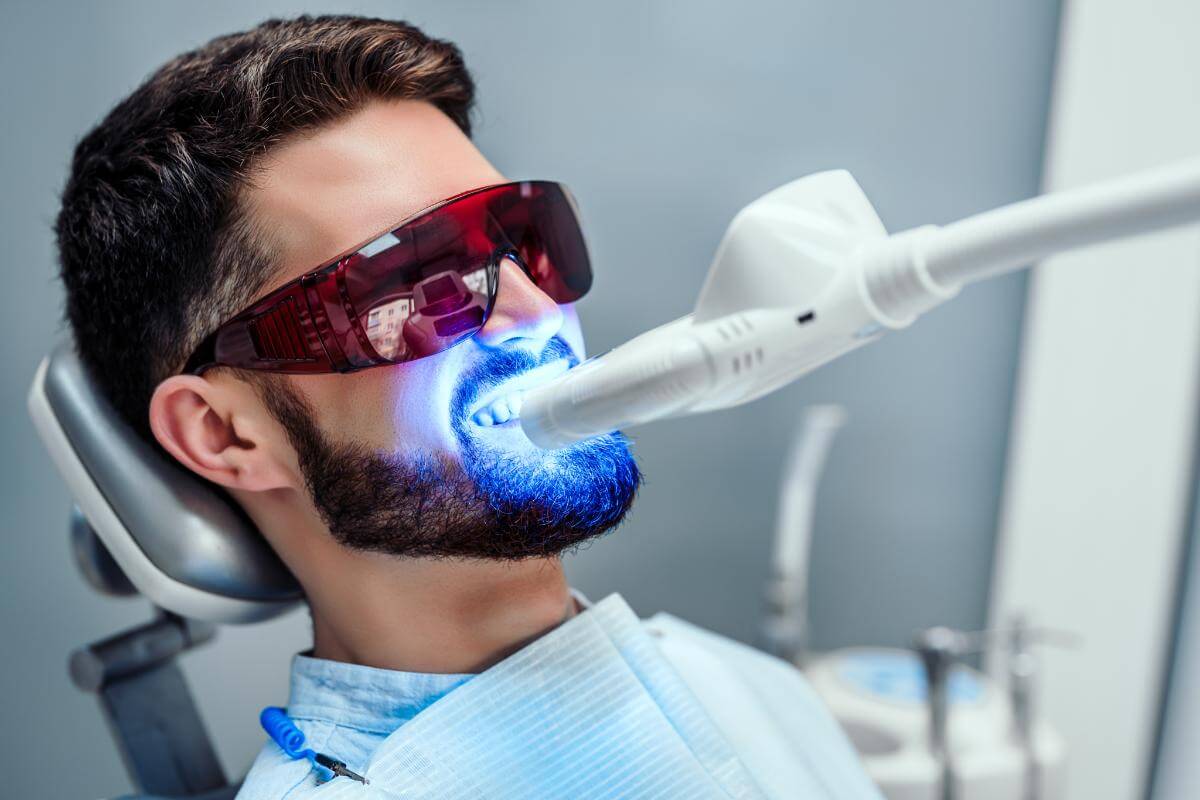Have you ever noticed that your teeth don’t look as white as they used to? If so, you’re likely wondering what caused the discoloration. The most common causes of discoloration in teeth are aging, poor dental hygiene habits, and the consumption of certain foods or beverages. As you age, your enamel naturally begins to thin and discolor. Improper brushing and flossing can also lead to discolored teeth over time. Dark-colored beverages such as coffee, tea, and red wine can discolor teeth.
In addition to these lifestyle factors, tooth discoloration can indicate underlying diseases or disorders.
Teeth whitening services can help restore discolored teeth to their original whiteness. Supreme Dentistry offers various services that can help you achieve your desired level of whiteness for your teeth. Our professional dentists and hygienists are here to answer any questions about the discoloration and the best options for restoring your smile. Contact us today at
844.966.2333 to learn more about our teeth whitening services.
Types of Discoloration in Teeth
There are two main types of discoloration in teeth intrinsic and extrinsic staining.
Intrinsic Staining
Intrinsic discoloration occurs when the discoloration is inside the tooth rather than on the surface. This discoloring can be caused by medications like tetracycline or excessive amounts of fluoride during childhood (also known as fluorosis).
Extrinsic Staining
Extrinsic staining occurs when the outside of your tooth becomes stained by certain foods, drinks, smoking, and poor oral hygiene practices. The discoloration will appear more yellow or brown.
Diseases that Cause Tooth Discoloration
In addition to discoloration caused by lifestyle choices and medications, the discoloration can also be a sign of dental disease. Cavities, gum disease, and other conditions can discolor your teeth. If you notice discoloration in your teeth, visiting Supreme Dentistry for a proper diagnosis and treatment plan is essential.
Beyond discoloration caused by food and drink, discolored teeth may be a sign of a more serious medical condition. Diseases that can cause discoloration in teeth can include:
- Kidney disease
- Diabetes
- Hepatitis C
- Hemochromatosis
- Amyloidosis
If other symptoms accompany discolored teeth, it is crucial to visit a doctor for a diagnosis.
How to Fix One Discolored Tooth?
If you only have one tooth that has become stained, you can restore its original color in a few ways. The first option is veneers. Dental veneers are thin covers placed over your existing teeth to mask any stains or chips. However, this is an expensive option without guaranteeing it will work for all kinds of stains.
An alternative option is whitening strips or bleaching products explicitly designed for one-tooth whitening; these products work by bleaching away any surface stains on your tooth while leaving other healthy teeth unaffected. Finally, you could try microabrasion. This is a procedure where a dentist removes layers from the surface of a stained tooth using an acidic gel, which is relatively inexpensive but may need to be repeated several times before it takes effect.
By understanding the possible causes of discoloration in teeth, you can better decide which teeth whitening services are best for your needs. Supreme Dentistry can help you determine which treatments are right for you and restore your smile to its original shine.
Call Supreme Dentistry to Schedule an Appointment for Teeth Whitening Services
No matter what kind of discoloration you have on your teeth—whether it’s due to food or drink staining or a medical condition. It’s important to understand why it happened so that you can choose an appropriate treatment plan. At Supreme Dentistry, we offer a range of treatments for restoring the original color of your teeth, from veneers and whitening strips, and bleaching products to microabrasion procedures.
Contact us today at
844.966.2333 for more information about our services.







